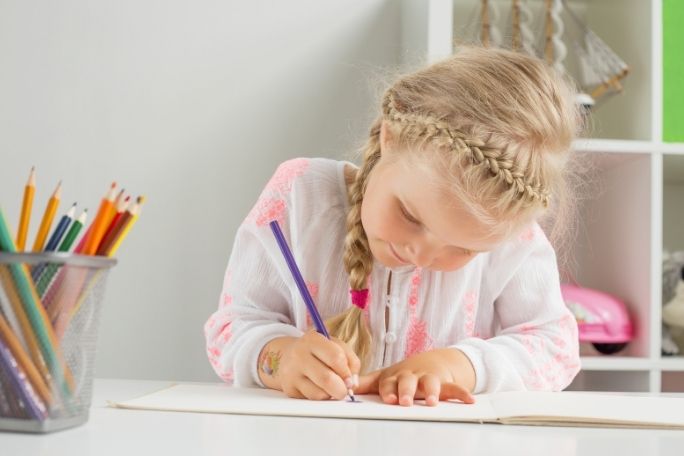Lesson summary
In this lesson, students will explore the visual convention of colour using connector pens. As an introduction to colour theory, students discuss the question ‘what is colour?’, before experimenting with complementary and analogous colours in the colour wheel. Students will apply their knowledge of complementary and analogous colours in two number of contemporary artworks, then apply their understanding in their own artwork.
Learning intentions:
Students will...
- understand the primary and secondary colour wheels
- Students will use a colour wheel to select complementary and analogous colours
Success criteria:
Students can...
- use a secondary colour wheel to find analogous and complementary colours
- identify analogous and complementary colours in an artwork using a colour wheel
- use complementary and analogous colours in an artwork to draw the viewer’s attention to important areas of the work
Lesson guides and printables
Lesson details
Curriculum mapping
Australian curriculum content descriptions:
Year 3 & 4 Visual Arts:
- Use materials, techniques and processes to explore visual conventions when making artworks (ACAVAM111)
- Present artworks and describe how they have used visual conventions to represent their ideas (ACAVAM112)
Syllabus outcomes: VAS2.2, VAS2.1, VAS2.2.
General capabilities: Critical and creative thinking.
Relevant parts of Year 3 to 4 achievement standards: Students discuss how they and others organise the elements and processes in artworks.
Unit of work: Creative Sustainability – Years 3 & 4 – Visual Arts.
Time required: 60 mins.
Level of teacher scaffolding: Medium – Facilitate group work and run a colour mixing demonstration.
Resources required
- Student Worksheets – one copy per student
- One A3 colour printed Primary Colours Wheel
- A paint brush and around a bottle cap of red, yellow and blue paint (watercolour pencils will also work)
- A cup of water for cleaning a paint brush
- Data projector and internet access
- A large selection of connector pens in different hues of red, orange, yellow, green, blue and violet
- Colour Wheel Factsheet
- Colouring-in outline image
Skills
This lesson is designed to build students’ competencies in the following skills:
- Collaboration
- Communication
- Creativity
Additional info
Faber-Castell has long understood the importance of creativity to all people, especially to young people. It is also continuously searching for environmentally friendly processes and high-quality materials to enhance children’s creative experience throughout every development phase. For more information about Faber-Castell, click here.


Welcome back!
Don't have an account yet?
Log in with:
By signing up to Cool.org you consent and agree to Cool's privacy policy to
store, manage and process your personal information. To read more, please see
our privacy policy here(Opens in new tab).
Create your free Cool.org account.
Many of our resources are free, with an option to upgrade to Cool+ for premium content.
Already have an account?
Sign up with:
By signing up to Cool.org you consent and agree to Cool's privacy policy to
store, manage and process your personal information. To read more, please see
our privacy policy here(Opens in new tab).